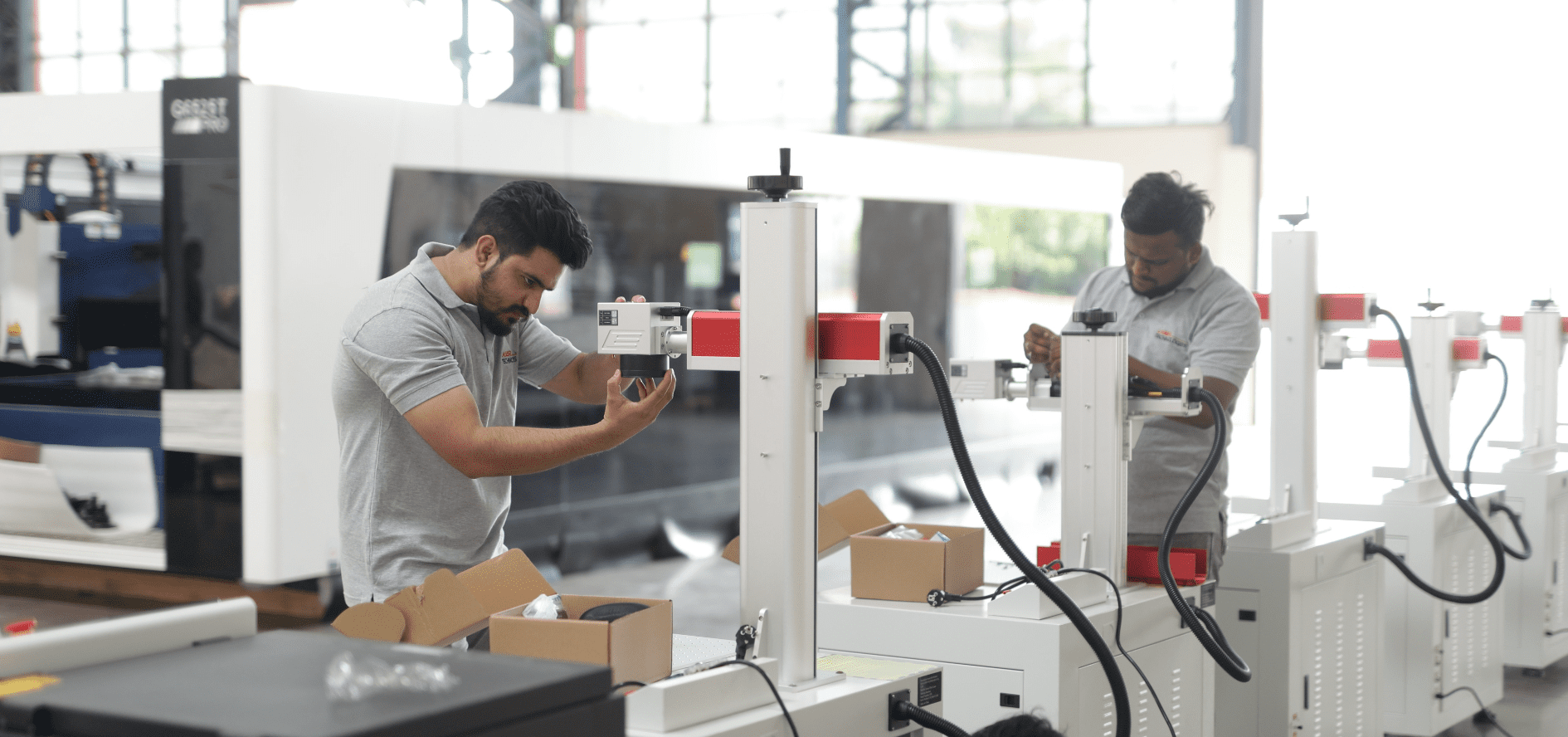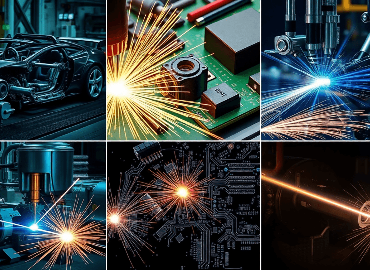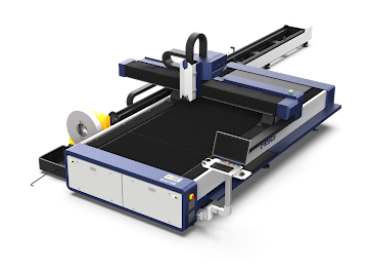Table of Content
- Factors to Consider When Selecting Materials for Laser Marking
- Choosing the Right Laser for the Job
- Advanced Laser Marking Techniques
- Conclusion
Laser marking is a great option to make permanent marks on various kinds of materials. The type of material affects how good the marks are and how fast the process works.
In this guide, we will explore key material factors and provide insights on how to leverage Laser Technologies' iMark devices to enhance laser marking procedures for different materials.
Factors to Consider When Selecting Materials for Laser Marking
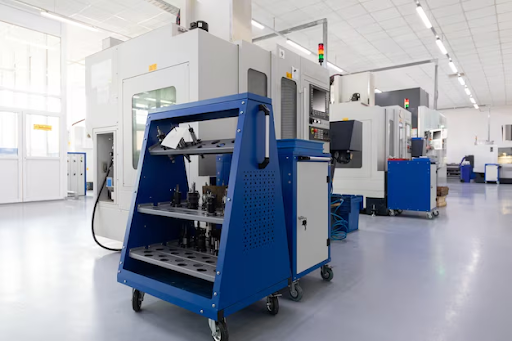
Selecting materials for laser marking depends on compatibility with laser wavelength, heat resistance, and various other factors. It is important to carefully consider these factors to ensure optimal marking results.
1. Material Colour
Laser Marking results vary depending on the colour of the material. Lighter materials like metals and plastics produce clear marks, while darker materials may require higher power settings.
- Dark Colours
Dark materials are ideal for laser marking due to their ability to absorb laser light, making the process smooth.
- Light Colours
Lighter shades reflect more laser light, requiring higher laser power or extra passes to achieve the perfect mark.
- Painted Sur
Paint is a simple and efficient tool due to its quick vaporisation, making it easy to mark regardless of the colour underneath.
2. Surface Finish: Smooth vs. Rough
Smooth surfaces are ideal for laser marking, as they provide a clean and precise mark. Rough surfaces may require more laser power to achieve the same result, potentially affecting the quality of the mark. It is recommended to test different settings to find the optimal balance between speed and quality when marking rough surfaces.
- Smooth Surfaces
Smooth surfaces are ideal for high-precision applications with shallow engraving, resulting in clear readability due to their smoothness as a blank canvas. However, it is important to note that smooth surfaces may not provide as much contrast for certain types of marking, such as colour changes or foaming. Testing different marking techniques and settings can help achieve the desired result on smooth surfaces.
- Rough Surfaces
Rough surfaces need a bit more effort. You’ll want deeper engraving to get good contrast and legibility. The texture can make a big difference in how visible your marks are. Additionally, rough surfaces may require more frequent maintenance of the marking equipment to ensure consistent quality. It is also important to consider the material composition of the rough surface, as certain materials may react differently to engraving techniques.
3. Material Hardness
The hardness of the material being marked can impact the quality of the mark. Softer materials may require less power for engraving, while harder materials may need more power to achieve a clear and lasting mark. It's important to consider the material's hardness when determining the optimal settings for marking.
- Hard Materials
Laser marking is suitable for both hard and soft materials, such as hardened steel, and can handle them without extra hassle. However, it is important to note that harder materials may require more power and precision to achieve the desired mark without damaging the material. Therefore, adjusting the settings accordingly based on the hardness of the material is crucial for successful laser marking.
- Soft Materials
Soft materials are more efficient due to their lower laser power consumption and less need for adjustments. However, it is important to be cautious with soft materials, as they can be easily damaged if the laser power is too high.
4. Reflectivity
Reflectivity plays a key role in laser marking, especially when dealing with shiny materials. High reflectivity can cause issues like poor contrast and readability in the final mark. It's important to adjust settings accordingly to ensure a successful outcome when marking shiny surfaces.
- Highly Reflective Materials
Metals like aluminium and copper are like mirrors, bouncing back a lot of the laser light. You’ll need to tweak the laser power, pulse rate, and beam speed to get the mark right. Sometimes, using specific wavelengths helps too.
- Low-Reflectivity Materials
Low-reflectivity materials are generally easier to mark, requiring less power and fewer adjustments. Materials with low reflectivity, such as plastics or wood, absorb more of the laser light, resulting in clearer and more precise marks. It is still important to test and adjust settings to achieve the desired outcome when marking these materials.
5. Thermal Conductivity
It's crucial to consider the thermal conductivity of the material being marked to prevent heat damage or distortion. Proper heat management techniques, such as adjusting laser parameters and using cooling systems, can help achieve accurate and consistent results.
- High Conductivity
Metals like aluminium cool down quickly, which can be a challenge. However, this rapid cooling can also result in more precise and efficient marking processes. Utilising materials with high thermal conductivity can improve the overall productivity and quality of laser marking applications.
- Low Conductivity
Materials that hold onto heat are much easier to mark efficiently. They usually need less laser power, making them ideal for clear marking.
6. Additives in Plastics
Additives in plastics can enhance their performance in various ways, such as by improving durability, UV resistance, or colour vibrancy. By incorporating additives strategically, manufacturers can create plastic materials that meet specific requirements for different applications. Some plastics come with special additives that react well to laser light, boosting contrast and marking speed. For consistent performance, these additives need to be evenly distributed.
Choosing the Right Laser for the Job
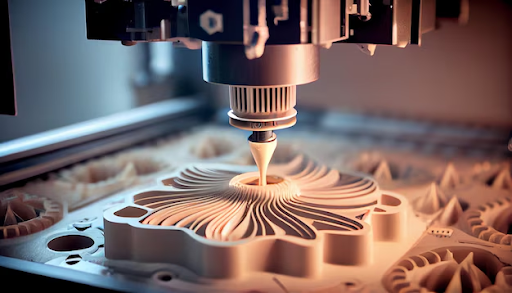
Choosing the right laser for the job is crucial to ensuring optimal marking results. Factors such as wavelength, power, and beam quality should be considered to achieve the desired outcome.
1. CO2 Lasers
CO2 Lasers are perfect for organic materials like wood, glass, and some plastics. Additionally, their long wavelength allows for deeper penetration into certain materials, resulting in durable and long-lasting marks.
2. Fibre Lasers
Fibre Lasers are ideal for metals and deliver high-contrast marks on various plastics. Their shorter wavelength allows for fine detail and crisp markings, especially on reflective surfaces like metals.
3. Nd:YAG and Nd:YVO4 Lasers
Nd:YAG and Nd:YVO4 Lasers work well on metals and certain plastics. They are also commonly used in applications requiring deep engraving or cutting capabilities.
Advanced Laser Marking Techniques
Advanced laser marking techniques, such as annealing and foaming, can provide unique and durable marks on a variety of materials. These techniques allow for customisation and precision in marking applications.
1. Annealing
Annealing heats the material without melting it, changing its structure to produce high-contrast marks. It’s great for metals and microelectronics, leaving the material's integrity intact.
2. Ablation
By vaporising material, ablation offers precise and controlled marking. Ideal for applications needing different mark depths, like 2D codes.
3. Engraving and Melting
Engraving and melting combine removing material with surface melting, creating durable marks that withstand harsh environments.
Conclusion
Choosing the perfect laser mark is about analyzing your material and understanding its needs. With Laser Technologies' iMark machines, selecting the right laser type and tweaking parameters based on material properties can make all the difference. Whether you're working with metals, plastics, or anything else, these insights will help you achieve precise, durable, and high-contrast marks every time.

